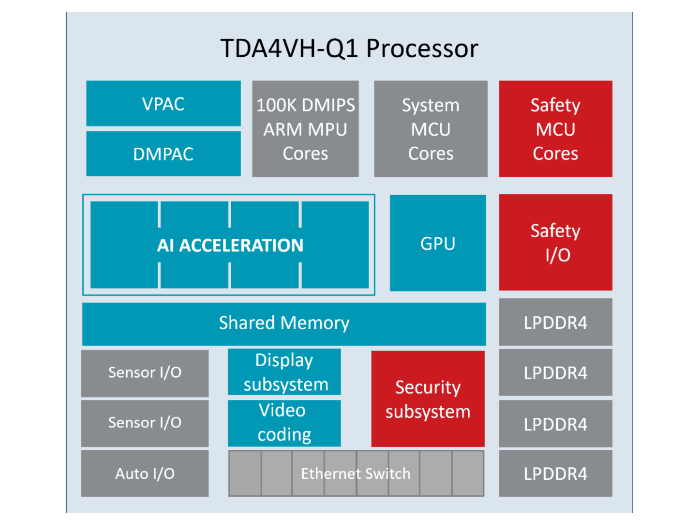
When we drive through neighborhoods and towns and see kids walking and biking, we realize the importance of road safety. According to a 2021 study by the National Highway Traffic Safety Administration (NHTSA), an average of 20 pedestrians are killed in traffic accidents every day in the United States - one pedestrian every 71 minutes. A study by the World Health Organization in 2022 found that more than half of the 1.3 million people killed in road traffic accidents each year are pedestrians, cyclists and motorcyclists. Unfortunately, driver distraction is one of the main causes of these accidents, and this distraction trend seems to be increasing every year.
Advanced Driver assistance systems (ADAS) help mitigate the effects of distracted driving, thereby providing comprehensive protection for drivers, pedestrians, and vulnerable people on the road. To achieve a five-star safety rating and meet regulatory requirements, additional backup cameras, front-facing cameras and driver monitoring systems are needed. As a result, many manufacturers are improving their vehicle architectures to integrate various active safety features in ADAS domain controllers.
Domain controllers typically require:
● Ability to connect to multiple sensors: number, mode and resolution.
● Vision, artificial intelligence (AI) and general processing for perception, driving and parking applications.
● Connectivity to low-bandwidth and high-speed in-vehicle networks.
● Functional safety and security prevents damage to critical components.
Processing and system requirements for ADAS domain controllers
The increasing demand for system memory, computing performance, and input/output (I/O) bandwidth makes system design more complex and increases system costs. Today's high-end ADAS systems use multiple cameras with different resolutions and are equipped with various radar sensors around the car to provide a complete view of the driving environment. For each set of images collected from sensors, AI and computer vision-enabled detection and classification algorithms need to run at a high frame rate per second to accurately interpret the scene. This presents several challenges for system and software designers, including connecting these sensors to processing systems, transferring their contents to memory, and synchronizing data for real-time processing by classification algorithms.
Texas Instruments' TDA4VH-Q1 System-on-chip (SoC) (shown in Figure 1) integrates features such as vision pre-processing, depth and motion acceleration, AI network processing, automotive network interfaces, and security microcontrollers (MCUS). The TPS6594-Q1 power management integrated circuit is optimized to power the TDA4VH-Q1 in applications requiring automotive Safety Integrity Level (ASIL) D, including functional safety features such as voltage monitoring, hardware error detection of the TDA4VH-Q1 SoC, and a question-answering watchdog. Used to monitor the MCU on the SoC for software errors that cause lock-in.
Figure 1: Simplified diagram of the TDA4VH-Q1 SoC

Supports multi-camera visual perception
One example of an ADAS application that needs to improve processor performance is multi-camera vision perception. Installing cameras around the car provides a 360-degree view that helps prevent head-on collisions and helps drivers stay alert to traffic and pedestrian activity in blind spots and adjacent lanes.
Phantom AI utilizes TI's J784S4 processor open source software development Kit (SDK) to develop a multi-camera vision perception system for the TDA4VH-Q1. Phantom AI's PhantomVision system provides a complete set of ADAS capabilities for the TDA4VH-Q1 processor, from compliance with EU general safety regulations to compliance with the Society of Automotive Engineers (SAE) Level L2 and L2+ standards. In addition to basic features such as vehicle, vulnerable road groups, free space, traffic signs and traffic light detection, PhantomVision includes additional features such as construction zone, turn signal and taillight detection, and AI-based self-path prediction. Its multi-camera perception system is a combination of front -, side - and rear-view cameras that provide full coverage of the vehicle's 360-degree field of view, helping to eliminate blind spots (see Figure 2).
Figure 2: Camera position for 360-degree field of view used by Phantom AI

By leveraging a combination of TDA4VH-Q1's high-performance computing, deep learning engine, and dedicated accelerators for signal and image preprocessing, Phantom AI makes real-time operations possible. Dedicated vision preprocessing accelerators handle camera pipelines, including image capture, color space conversion, and multi-scale image pyramid construction. Combined with Texas Instruments' deep learning library, the TDA4VH-Q1's trillions of high-speed operations per second multi-core digital signal processor and matrix multiplication auxiliary engine provide an efficient neural network with fast algorithms and minimal I/O operation scheduling for high accuracy and low latency.
Conclusion
Building complex multi-sensor ADAS systems for SAE L2 and L2+ driving does not require a water-cooled supercomputer. With well-designed SOCs like the TI TDA4VH-Q1, designed and developed by professional automotive engineers such as Phantom AI, cost-effective systems that meet functional safety requirements can be brought to market. While we are enthusiastic about the future of autonomous driving, the real purpose of designing cost-effective systems that meet functional safety requirements is to make our world a safer place. Enabling ADAS technology to reach more segments of the automotive market (enabling more cars to be equipped with more ADAS) leads to a better and safer experience for drivers and pedestrians.
About US
Heisener Electronic is a famous international One Stop Purchasing Service Provider of Electronic Components. Based on the concept of Customer-orientation and Innovation, a good process control system, professional management team, advanced inventory management technology, we can provide one-stop electronic component supporting services that Heisener is the preferred partner for all the enterprises and research institutions.
